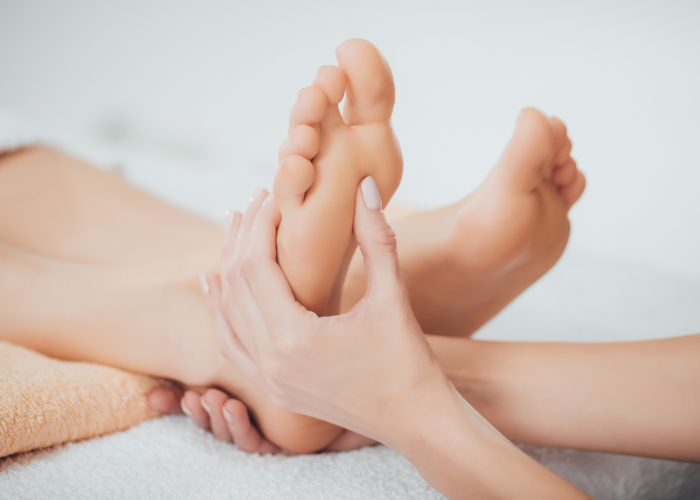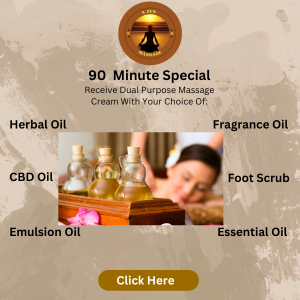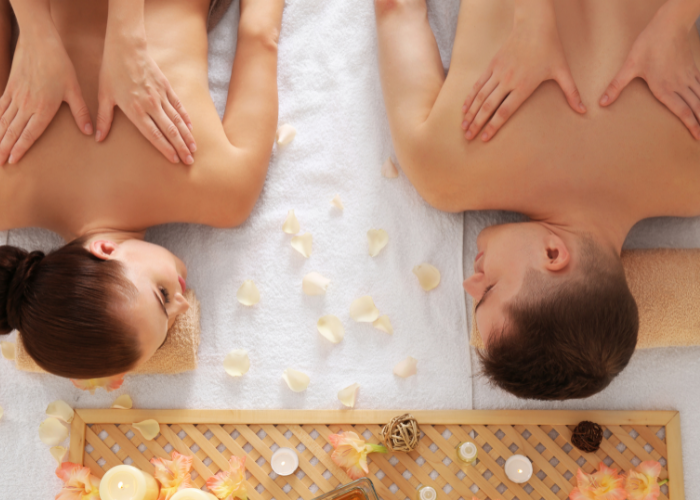In the hustle and bustle of our daily lives, it’s easy to forget the importance of self-care. One wonderful way to unwind and rejuvenate is through a soothing foot massage. This ancient practice not only relaxes tired feet but also promotes overall well-being. Know some tips for foot massage.
Whether you’re a professional masseuse or a novice looking to treat yourself or a loved one, these tips for foot massage will guide you on a path to relaxation and tranquility. From understanding the basics to exploring advanced techniques, this article will help you unlock the secrets to a blissful foot massage experience.

Tips for Foot Massage: The Art of Preparation
Before diving into the world of foot massage, it’s crucial to set the stage for a truly relaxing experience. Begin by creating a serene ambiance with dimmed lights, soothing music, and a comfortable chair or massage table.
Gather your supplies, such as a nourishing massage oil, clean towels, and a foot basin filled with warm water and Epsom salts. These preparations will ensure that both the giver and receiver can fully unwind and enjoy the massage.
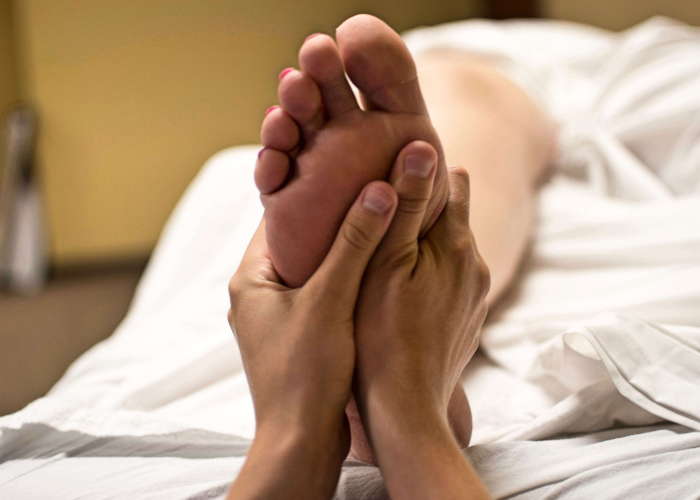
Understanding Foot Anatomy
To give an effective foot massage, it’s essential to grasp the basics of foot anatomy. The foot is a complex structure comprising 26 bones, 33 joints, and over 100 muscles, tendons, and ligaments.
Learning about the various pressure points, arches, and the meridian lines on the feet can help you target specific areas for relaxation and relief from tension. A good understanding of foot anatomy will enable you to tailor your massage techniques to the individual’s needs.
The Perfect Technique
The art of foot massage lies in the technique. Start with gentle strokes and gradually increase pressure as the muscles relax. Use your thumbs, fingers, and knuckles to knead, rotate, and press various parts of the foot. Focus on the sole, arch, heel, and toes, paying attention to any knots or tension.
Employ a combination of long, sweeping motions and circular movements to improve circulation and release stress. Communication with the recipient is key; ensure the pressure is comfortable and adjust as necessary.

Targeting Stress and Pain Relief
One of the primary benefits of foot massage is stress and pain relief. Specific pressure points on the feet are connected to different parts of the body. For instance, massaging the ball of the foot can alleviate headaches, while working on the heel may help with lower back pain.
Learn about reflexology and acupressure techniques to effectively address various health concerns through foot massage. Be mindful of the recipient’s comfort and pain threshold while working on these specific areas.
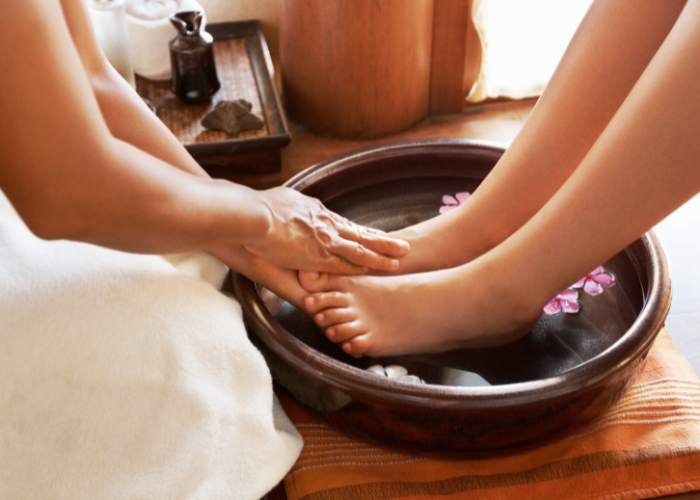
The Finishing Touches
As you conclude the foot massage session, it’s essential to leave a lasting impression. Gradually reduce the pressure and use lighter strokes to signal the end of the massage. Place a warm towel over the recipient’s feet to soothe and relax the muscles further.
Encourage them to drink a glass of water to stay hydrated, and offer some gentle stretches to enhance the overall experience. Express care and gratitude, as the connection and energy exchange during a foot massage can be a profoundly enriching experience for both the giver and receiver.
FREQUENTLY ASKED QUESTIONS
What are the benefits of foot massage?
Foot massage offers a wide range of benefits, including relaxation, stress reduction, improved circulation, pain relief, and enhanced overall well-being. By targeting specific pressure points on the feet, it can also address various health concerns and promote better sleep.
How do I prepare for a foot massage at home?
To prepare for a foot massage at home, create a relaxing ambiance with soft lighting and soothing music. Gather supplies like massage oil, clean towels, and a foot basin with warm water and Epsom salts. Ensure you have a comfortable chair or massage table. These preparations will help you and your recipient fully enjoy the massage experience.
Can anyone give or receive a foot massage?
Yes, anyone can give or receive a foot massage, and it’s an excellent way to connect with loved ones or practice self-care. However, if you have specific medical conditions or concerns, it’s advisable to consult a healthcare professional before starting any massage therapy.
What are some common foot massage techniques?
Common foot massage techniques include using your thumbs, fingers, and knuckles to knead, rotate, and press various parts of the foot. You can employ long, sweeping motions and circular movements to enhance circulation and release tension. Learning about reflexology and acupressure can also help target specific areas for stress and pain relief.
How long should a foot massage session last?
The duration of a foot massage session can vary depending on personal preference and availability. On average, a session can last anywhere from 15 to 30 minutes. However, you can extend it to provide a more comprehensive relaxation experience. Always ensure both the giver and receiver are comfortable throughout the session, and communicate to adjust the length as needed.
Conclusion
Incorporating foot massage into your self-care routine or sharing this ancient art with loved ones can be a gateway to relaxation, stress reduction, and improved well-being. With the right preparation, knowledge of foot anatomy, and proper technique, you can embark on a journey of self-discovery and healing.
Remember that foot massage is not only about physical touch but also about creating a space of mindfulness, connection, and relaxation. So, take these tips for foot massage to heart, and let the soothing power of touch enhance your life and the lives of those around you.


